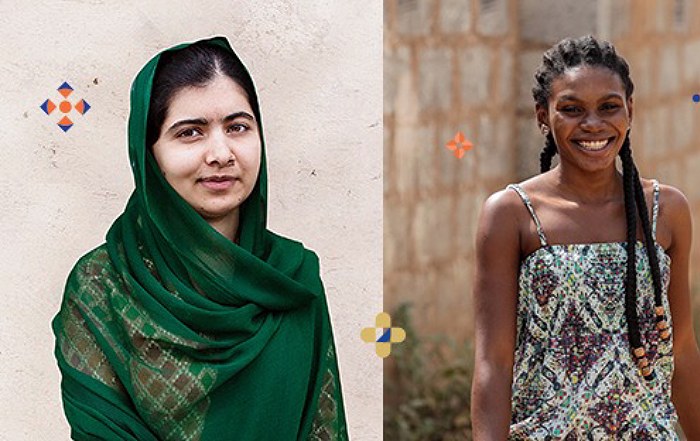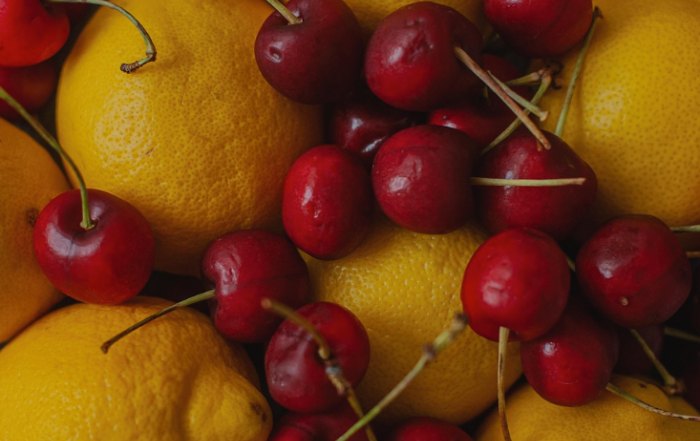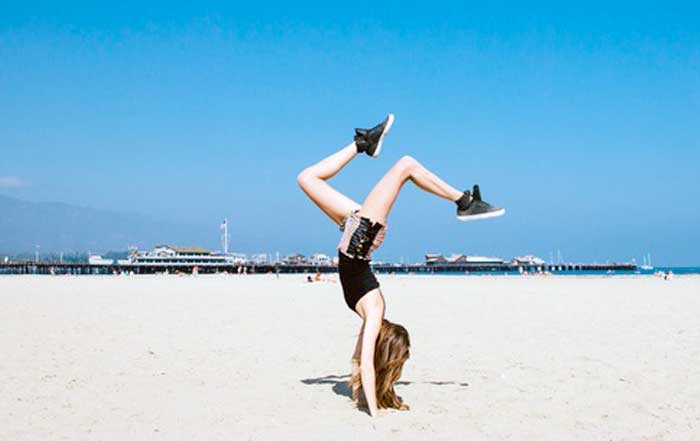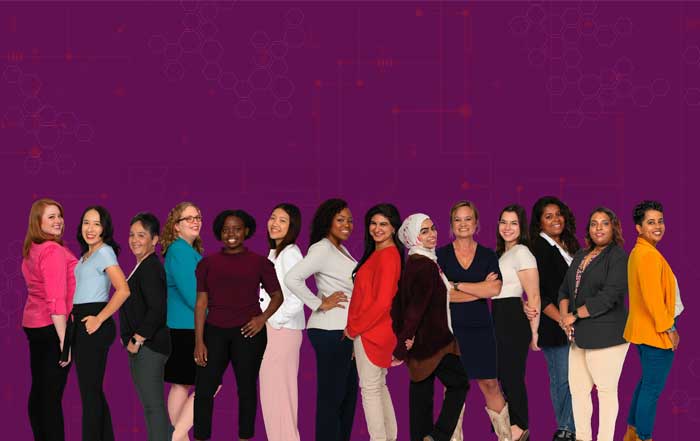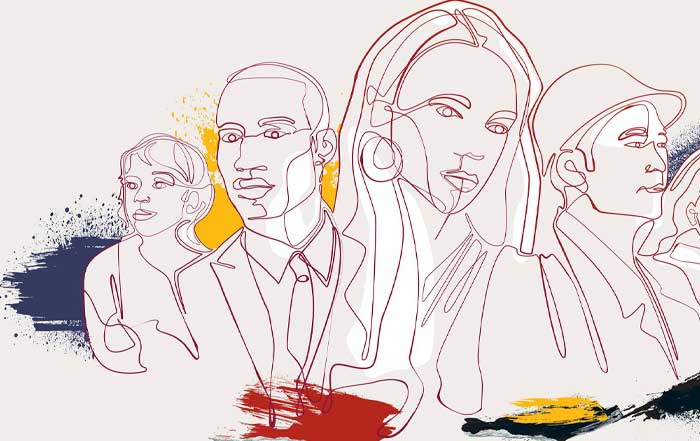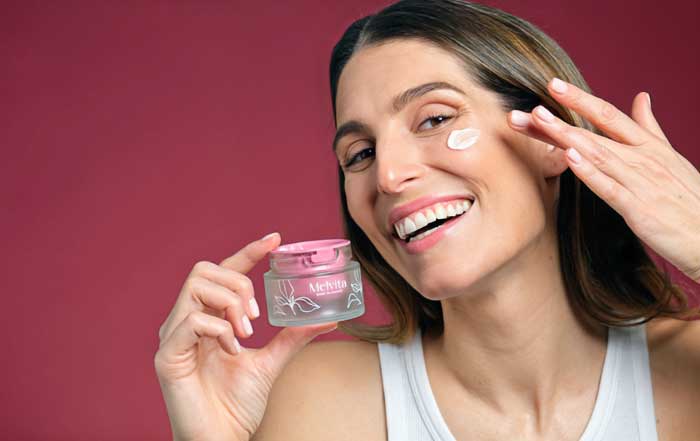The global business environment of 2025 is witnessing an unprecedented evolution where the narratives of leadership have been irrevocably enriched by the visionary contributions of female chief executives. Across industries and continents, female CEOs have not only shattered conventional barriers but also redefined what it means to lead a corporation with a blend of empathy, strategic acumen, and relentless determination. Their journeys serve as powerful case studies in transforming challenges into opportunities, thereby paving a path for future generations of leaders and inspiring a broader dialogue on corporate governance, innovation, and diversity.
Female Leadership: Transformative Journey
A New Epoch in Corporate Leadership
The modern era has seen a gradual yet profound shift in how leadership is perceived, with female CEOs occupying pivotal roles in some of the world’s most influential companies. This shift is characterized by an unwavering commitment to innovation and a deep-seated understanding of human capital that transcends traditional business paradigms. By integrating cutting-edge technology, fostering inclusive work environments, and emphasizing sustainability, these leaders are at the forefront of a corporate renaissance that challenges the status quo and redefines success. Their stories are marked by resilience, continuous learning, and a nuanced approach to balancing profitability with purpose.
The transformative impact of these executives is evident in their ability to navigate turbulent markets, embrace digital transformation, and drive global growth strategies with a remarkable combination of foresight and adaptability. Their leadership has influenced boardrooms and reshaped company cultures, creating ripple effects that extend far beyond their organizations. The journey of these trailblazers resonates deeply with the readers at Women and those seeking a deeper understanding of transformative leadership on Leadership.
Historical Perspectives and the Evolution of Female Leadership
Historically, the corporate realm was predominantly shaped by traditional leadership models that favored uniformity and hierarchical decision-making. However, the gradual inclusion of women in executive roles has sparked a re-evaluation of longstanding assumptions about power, control, and success. Female CEOs have reintroduced concepts of collaboration, empathy, and community into the boardroom, fostering an environment where diverse perspectives are not only welcomed but also celebrated.
This evolution can be traced back to significant shifts in societal norms, changes in educational paradigms, and the gradual dismantling of glass ceilings. As organizations began to recognize the untapped potential of diverse leadership, progressive policies and inclusive practices became integral to strategic decision-making processes. The rise of female CEOs has been bolstered by global movements advocating for gender equality and sustainable development, with research from institutions such as Harvard Business Review and Forbes underscoring the correlation between diversity and improved corporate performance.
The journey from marginal representation to commanding leadership positions is a testament to the transformative power of perseverance, continuous learning, and adaptive strategies. By examining the early career trajectories, educational investments, and mentorship networks that facilitated these transitions, one gains a comprehensive understanding of how female leadership has reconfigured traditional business models and contributed to a more balanced corporate ecosystem. Readers interested in detailed career strategies can explore further insights on Self Improvement and Education.
The Multifaceted Leadership Styles
Female CEOs are renowned for their distinctive leadership styles, which often blend an analytical approach with a profound sense of empathy and community. Their management techniques emphasize open communication, collaborative problem-solving, and a forward-thinking mindset that actively seeks innovative solutions. This multidimensional approach has proven particularly effective in an era marked by rapid technological advancements and ever-changing market dynamics.
One of the key aspects of their leadership is the emphasis on creating a work environment that nurtures creativity and fosters loyalty. These leaders champion the idea that every employee’s contribution is valuable, and they implement practices that promote transparency and shared responsibility. This inclusive approach has not only boosted morale within organizations but has also translated into measurable improvements in productivity and innovation. Esteemed publications such as Bloomberg and MIT Sloan Management Review have documented numerous instances where companies led by visionary women have outperformed their competitors in both market share and employee engagement.
Moreover, the capacity to lead with compassion while maintaining a strategic outlook has allowed these CEOs to navigate complex challenges with agility. Their ability to integrate qualitative insights with quantitative data in decision-making processes has redefined the benchmarks for corporate governance. Such practices not only optimize internal processes but also enhance stakeholder relationships and solidify trust in the organization’s long-term vision. For those looking to understand the nuances of effective corporate leadership, additional perspectives can be found on Guide and Business.
Strategic Innovation and Transformative Vision
At the heart of every successful organization is a leader who is capable of steering the company through the complexities of the modern economic landscape. Female CEOs have consistently demonstrated an unparalleled commitment to innovation, investing in technology, sustainable practices, and strategic partnerships that drive long-term value. Their visionary leadership has often been characterized by bold initiatives that challenge industry norms and set new benchmarks for excellence.
In today’s fast-paced environment, the ability to anticipate market trends and adapt to emerging challenges is crucial. Female leaders are adept at leveraging advanced analytics, artificial intelligence, and digital transformation strategies to reposition their companies for growth. Their commitment to continuous improvement has led to the development of novel business models that integrate sustainability and profitability in equal measure. For instance, research highlighted by Financial Times and strategic insights from McKinsey illustrate how these leaders employ data-driven decision-making to unlock hidden potential within their organizations.
Beyond technological innovation, these CEOs prioritize the cultivation of a corporate culture that values both individual excellence and collective progress. By implementing mentorship programs, investing in employee development, and embracing agile methodologies, they create an ecosystem where innovation thrives and transformative ideas are brought to life. Their strategic initiatives have not only led to impressive financial results but have also established a legacy of ethical business practices and corporate responsibility. Those who wish to explore the impact of innovation on business growth can learn more about best practices on Statista and Reuters.
Navigating Challenges and Building Resilience
The path to executive leadership is seldom free of obstacles, and female CEOs have navigated a landscape filled with unique challenges, from deeply ingrained stereotypes to institutional biases that often undermine confidence. Despite these hurdles, they have exhibited extraordinary resilience, turning adversity into an opportunity for personal and professional growth. Their journeys are characterized by moments of profound self-reflection, strategic risk-taking, and an unwavering commitment to their vision.
In overcoming these challenges, many female leaders have emphasized the importance of establishing robust support networks, both within and outside their organizations. They have sought mentorship from seasoned professionals, engaged with industry peers, and built alliances that provide critical insights and bolster their resolve during trying times. The significance of these support systems cannot be overstated, as they often serve as the cornerstone of sustainable success. Insights into overcoming adversity and building a resilient corporate culture are widely discussed in reputable outlets like BBC Business and scholarly research available through World Economic Forum.
In addition, these leaders have been instrumental in spearheading initiatives that promote gender diversity and inclusivity in the workplace. Their advocacy for equal opportunities has led to the implementation of comprehensive policies that address systemic inequities and foster a more dynamic and innovative corporate environment. By challenging traditional norms and establishing new paradigms of leadership, they have laid the groundwork for a future where success is measured not solely by financial metrics but by the positive impact on society at large. For a deeper exploration of these themes, readers can refer to discussions on Women and Leadership.
Empowerment Through Mentorship and Continuous Learning
A hallmark of the leadership journey for many female CEOs is the role of mentorship in shaping their careers. Recognizing that knowledge is a powerful tool in overcoming both professional and personal challenges, these executives have consistently sought guidance from experienced mentors while also investing in the development of the next generation of leaders. Their commitment to continuous learning and self-improvement is not only a personal credo but also a strategic imperative that has driven innovation and sustained competitive advantage across industries.
Mentorship, in this context, is viewed as a reciprocal relationship where wisdom is shared, challenges are addressed collectively, and future aspirations are nurtured with the same intensity as current endeavors. Female CEOs have often articulated the belief that mentoring is a catalyst for empowerment, enabling emerging leaders to gain confidence, acquire new skills, and navigate complex organizational dynamics with greater ease. This ethos of continuous learning has been validated by extensive research and industry reports available through resources like Harvard Business Review and case studies featured on Forbes.
Furthermore, the integration of structured mentorship programs into corporate strategies has demonstrated measurable improvements in both employee retention and overall performance. These initiatives not only foster a sense of belonging and purpose among team members but also stimulate an environment where innovative ideas are freely exchanged and implemented. The tangible benefits of mentorship are evident in enhanced productivity, improved strategic outcomes, and a heightened level of organizational agility. For those interested in personal development and career strategies, additional insights can be gleaned from resources on Self Improvement and Education.
Fostering a Culture of Inclusive Excellence
The transformative impact of female CEOs is perhaps most profoundly felt in the way they reshape organizational culture. By championing diversity and inclusivity, these leaders have redefined what it means to cultivate an environment where every voice is valued and every contribution recognized. Their approach to management is rooted in the understanding that a heterogeneous workforce is not only a moral imperative but also a strategic asset that drives innovation, customer satisfaction, and long-term profitability.
The emphasis on inclusivity extends beyond internal policies to influence external perceptions and stakeholder relationships. Female leaders have worked diligently to ensure that their organizations reflect the diverse communities they serve, implementing initiatives that promote equitable hiring practices, transparent governance, and active community engagement. This holistic approach to corporate culture is supported by extensive research and industry analyses, including those published by Bloomberg and MIT Sloan Management Review, which underscore the correlation between diversity and enhanced business performance.
A culture of inclusive excellence is further reinforced by investments in employee training, leadership development programs, and robust performance management systems that emphasize both accountability and empowerment. Through these initiatives, female CEOs have created ecosystems where innovation flourishes, creativity is nurtured, and every individual is encouraged to contribute to the collective success of the organization. For readers seeking additional perspectives on fostering inclusivity in the workplace, further reading is available on Guide and Business.
Strategic Decision-Making and Ethical Governance
The capacity for strategic decision-making in today’s dynamic economic landscape is a defining characteristic of successful leadership. Female CEOs have demonstrated an exceptional ability to balance short-term operational demands with long-term strategic objectives, thereby steering their organizations through periods of volatility while maintaining a steadfast commitment to ethical governance. Their decision-making processes are informed by comprehensive risk assessments, data-driven insights, and a principled approach that prioritizes transparency and accountability.
In many instances, the leadership style of these executives is marked by an inclination toward collaborative decision-making, where multiple perspectives are considered and innovative solutions are developed through consensus. This inclusive approach not only mitigates potential risks but also builds trust among stakeholders, employees, and customers alike. The integration of ethical governance practices has become a cornerstone of modern corporate strategy, as companies increasingly recognize that sustainable success is built on a foundation of integrity and social responsibility. For additional insights into ethical business practices, resources such as Reuters and Financial Times offer comprehensive analyses and case studies.
The evolution of strategic decision-making among female CEOs is also closely tied to their commitment to continuous improvement and innovation. By leveraging advanced analytics and embracing emerging technologies, these leaders have redefined operational excellence and reimagined the role of leadership in driving corporate transformation. Their ability to navigate complex regulatory landscapes, anticipate market shifts, and implement forward-thinking strategies has not only bolstered financial performance but has also cemented their reputation as champions of ethical and sustainable business practices. For readers interested in a more detailed examination of strategic governance, further perspectives can be explored on Business and World.
The Interplay of Innovation and Sustainability
In the evolving framework of modern corporate strategy, the confluence of innovation and sustainability has emerged as a defining pillar of success. Female CEOs are uniquely positioned to harness this synergy, leveraging innovative practices to drive environmental stewardship and social responsibility while simultaneously achieving robust economic performance. Their leadership is characterized by an unwavering commitment to integrating sustainable practices into the core of business operations, thereby setting new benchmarks for what is possible in the realms of corporate accountability and long-term profitability.
This transformative approach is grounded in the understanding that sustainable business practices are not only environmentally and socially beneficial but also yield significant competitive advantages in an increasingly conscientious marketplace. The integration of renewable energy solutions, resource-efficient operations, and corporate social responsibility initiatives has become a defining feature of modern leadership. Comprehensive reports and analyses by sources such as McKinsey and World Economic Forum provide detailed insights into the measurable impacts of these practices on both the bottom line and broader societal outcomes.
The ability of female CEOs to drive change through innovation is further exemplified by their strategic investments in research and development, technology-driven efficiency measures, and collaborative partnerships that span industries and geographies. Their forward-thinking initiatives are a testament to the idea that the path to long-term success lies in harmonizing the objectives of economic growth with the imperatives of environmental stewardship and social progress. Readers seeking to understand the intricate dynamics of sustainable business practices can explore additional research on Statista and Harvard Business Review.
Global Impact and the Shaping of Future Leadership
The influence of female CEOs extends far beyond the confines of their individual organizations, permeating global markets and shaping the future trajectory of leadership across diverse industries. Their ability to navigate international regulatory landscapes, drive cross-cultural collaboration, and spearhead transformative initiatives has established them as key architects in the evolution of modern corporate governance. The ripple effects of their leadership are evident in improved market dynamics, enhanced investor confidence, and a more inclusive global business community.
As global markets become increasingly interconnected, the role of female executives in promoting sustainable development and ethical business practices has taken on a renewed significance. Their leadership not only contributes to the financial prosperity of their organizations but also fosters a broader culture of accountability, transparency, and social responsibility that resonates with stakeholders around the world. Detailed analyses published by sources such as Reuters and BBC Business illustrate the far-reaching impacts of inclusive leadership on global economic trends and market stability.
In shaping the future of corporate leadership, these trailblazing women continue to inspire a new generation of executives who are poised to challenge established norms and drive transformative change. Their legacies are built on a foundation of visionary thinking, strategic execution, and an unyielding commitment to creating value that extends beyond the balance sheet. Readers interested in global business trends and leadership evolution can gain further insights on World and Education, as well as explore case studies on emerging markets that highlight the transformative power of diverse leadership.
Embracing Change Through Adaptive Strategies
The dynamic nature of today’s business environment demands that leaders possess an inherent ability to adapt, innovate, and transform in response to rapidly evolving market conditions. Female CEOs have exemplified this adaptive capacity through their strategic agility, consistently demonstrating the ability to pivot in response to emerging challenges and capitalize on new opportunities. Their leadership is characterized by a relentless pursuit of excellence that is both pragmatic and visionary, ensuring that their organizations remain at the forefront of industry advancements.
The principles of adaptive leadership are deeply embedded in the operational philosophies of these executives, who have cultivated environments that encourage experimentation, continuous feedback, and iterative improvement. This proactive approach to change management is not only essential for mitigating risks but also for capitalizing on the dynamic interplay of global market forces. As detailed reports from MIT Sloan Management Review and insights shared by Bloomberg demonstrate, the ability to adapt quickly and decisively is a hallmark of successful corporate strategy in the digital age.
Moreover, the success of these adaptive strategies is further amplified by the emphasis on workforce development and organizational resilience. Female CEOs have been instrumental in instituting training programs, leadership workshops, and comprehensive development initiatives that empower employees at all levels to embrace change and contribute to the company’s strategic vision. These initiatives not only strengthen the internal fabric of the organization but also reinforce a culture of innovation and continuous improvement. For additional perspectives on adaptive strategies and workforce resilience, readers can refer to resources on Self Improvement and Guide.
Balancing Ambition and Well-Being
While the relentless drive for excellence and innovation is a defining trait of successful female CEOs, their journeys are also marked by a conscious commitment to balancing professional ambition with personal well-being. In a world where the demands of corporate leadership can be overwhelming, these executives have consistently prioritized strategies that promote health, wellness, and a harmonious work-life balance. Their personal narratives underscore the importance of self-care, mindfulness, and the cultivation of strong support systems that enable sustained high performance.
This balanced approach to leadership reflects a broader trend in modern business practices where the focus on employee well-being is increasingly recognized as a critical driver of organizational success. By integrating wellness programs, flexible work arrangements, and mental health initiatives into the corporate fabric, female CEOs have redefined what it means to lead with both heart and mind. Their practices serve as a compelling blueprint for organizations that seek to foster an environment of holistic well-being while maintaining a relentless focus on growth and innovation. Further reading on holistic leadership and personal development can be found on Lifestyle and Health.
The commitment to well-being is not limited to personal practices alone but is also reflected in the broader corporate strategies aimed at reducing stress, enhancing productivity, and fostering a supportive work environment. These initiatives have proven to be effective in cultivating a culture where employees are motivated, engaged, and equipped to meet the challenges of an increasingly competitive market. The integration of well-being into strategic leadership practices offers valuable lessons for organizations worldwide, as highlighted in comprehensive reports by Forbes and Harvard Business Review.
Cultivating a Legacy of Empowerment and Transformation
The enduring legacies of trailblazing female CEOs are not solely defined by their immediate business achievements but by the lasting impact they have on future generations of leaders. Their journeys are replete with lessons on resilience, innovation, and the power of transformative leadership that resonate deeply across industries and cultural boundaries. By forging paths that were once considered inaccessible, these executives have opened doors for countless aspiring leaders, fostering an environment where empowerment and transformation are interwoven into the very fabric of corporate culture.
The narratives of these influential leaders reveal that their success is the result of a multifaceted approach to leadership that encompasses strategic vision, ethical governance, and a deep commitment to nurturing talent. Their ability to inspire trust, cultivate innovation, and drive sustainable growth has set new standards for what effective leadership can achieve in today’s complex business landscape. The insights gleaned from their experiences serve as invaluable lessons for organizations that aspire to create a legacy of positive change and enduring impact. For those looking to explore inspirational success stories and actionable leadership strategies, additional resources are available on Leadership and Business.
Moreover, the transformative impact of these CEOs is increasingly evident in the way they influence industry standards, policy frameworks, and community development initiatives on a global scale. Their commitment to corporate responsibility and sustainable business practices has left an indelible mark on the world, fostering a spirit of innovation that transcends traditional boundaries and sets the stage for future breakthroughs. Readers interested in the intersection of corporate strategy and societal impact can find further insights on World and Education.
Transformative Industry Case Studies
Examining the case studies of renowned female CEOs provides a compelling lens through which the multifaceted nature of their leadership can be appreciated. These case studies offer a deep dive into the operational philosophies, strategic decisions, and cultural shifts spearheaded by these trailblazing executives, highlighting how their leadership styles have not only redefined industry benchmarks but also set new standards for ethical governance and sustainable growth.
For instance, the strategic overhaul implemented by Mary Barra at a leading global automotive company has been instrumental in driving innovation, operational efficiency, and market expansion. Her decisive actions in restructuring operations, investing in next-generation technologies, and fostering a culture of inclusivity have resulted in significant gains in both profitability and brand reputation. Detailed financial analyses and strategic reviews of her leadership approach have been featured in reputable publications such as Financial Times and Reuters, offering invaluable insights into the transformative power of visionary leadership.
Similarly, the tenure of Ginni Rometty at a renowned technology conglomerate stands as a sterling example of how a focus on digital transformation, customer-centricity, and agile organizational practices can yield remarkable outcomes in a competitive global market. Her efforts to integrate advanced analytics and foster a culture of continuous improvement have redefined the company’s strategic outlook, paving the way for sustained innovation and market leadership. Analyses of her leadership strategies can be further explored in in-depth features available on Bloomberg and MIT Sloan Management Review.
Another illuminating example is the groundbreaking leadership demonstrated by Indra Nooyi, whose visionary strategies at a global consumer goods corporation have not only driven robust financial performance but have also championed environmental sustainability and social responsibility. Her legacy is built on a firm belief in the synergy between ethical business practices and long-term profitability, a perspective that has reshaped corporate policy and inspired emerging leaders worldwide. For those interested in learning more about strategic leadership and innovation, further reading can be found on Forbes and Harvard Business Review.
Bridging the Gap Between Strategy and Culture
The transformative journeys of female CEOs reveal that successful leadership is as much about fostering a dynamic and inclusive corporate culture as it is about executing high-stakes strategic initiatives. These leaders have consistently demonstrated that when an organization’s culture is aligned with its strategic objectives, the resulting synergy can drive remarkable levels of innovation, employee satisfaction, and market competitiveness. Their efforts to bridge the gap between strategy and culture are reflective of a broader paradigm shift that values empathy, creativity, and collaboration as integral components of sustainable business success.
In organizations led by these trailblazers, corporate culture is meticulously cultivated through initiatives that emphasize open communication, shared values, and a commitment to collective progress. Regular town hall meetings, cross-functional teams, and employee development programs are just a few of the mechanisms through which these leaders create environments that are both stimulating and supportive. This alignment between strategy and culture has been instrumental in building organizations that are resilient, agile, and primed for long-term success, as documented by studies available on McKinsey and World Economic Forum.
Furthermore, the integration of cultural and strategic imperatives is exemplified by the robust corporate social responsibility (CSR) initiatives championed by female CEOs. These initiatives often address critical social and environmental issues, reinforcing the organization’s commitment to creating value beyond the bottom line while fostering a culture of ethical responsibility and communal engagement. For those seeking to understand the broader implications of CSR on corporate strategy, additional resources on Guide and Business offer comprehensive analyses of these dynamics.
The Role of Continuous Reinvention in Corporate Success
The ever-evolving business landscape necessitates that leaders not only respond to change but also actively shape it through continuous reinvention. Female CEOs have emerged as pioneers in this regard, consistently challenging the status quo and seeking innovative approaches to sustain competitive advantage in an increasingly volatile market. Their willingness to experiment, take calculated risks, and reinvent traditional business models has positioned them as true innovators in the corporate sphere.
This ethos of continuous reinvention is reflected in their persistent investment in research and development, the adoption of disruptive technologies, and the implementation of agile operational frameworks that enable rapid adaptation to market fluctuations. Their forward-thinking initiatives have not only resulted in immediate operational benefits but have also laid the groundwork for long-term strategic transformation. Insightful articles and research from Statista and Reuters illustrate the quantifiable benefits of such innovative practices, further emphasizing the need for dynamic leadership in today’s competitive environment.
Moreover, the drive for continuous reinvention is complemented by an unwavering commitment to ethical leadership and transparent communication. Female CEOs have cultivated an open culture where ideas are freely exchanged and challenges are addressed collectively, thereby creating a robust ecosystem that is capable of adapting to change while remaining true to its core values. This balanced approach to innovation and ethics serves as an enduring example for aspiring leaders and established executives alike. For further insights into the importance of adaptive leadership and continuous improvement, readers can explore related topics on Self Improvement and Education.
Lessons in Resilience, Vision, and Purpose
The overarching narrative of trailblazing female CEOs is one of resilience, vision, and an unwavering commitment to purpose. Their journeys, marked by both remarkable achievements and formidable challenges, offer a treasure trove of lessons for leaders across all levels of an organization. From the importance of visionary planning to the critical need for ethical governance and cultural inclusivity, the experiences of these leaders encapsulate a comprehensive blueprint for success in the modern business world.
Their strategic decisions, borne out of years of hard-fought experiences and relentless pursuit of excellence, serve as a powerful reminder that true leadership transcends conventional metrics of success. Instead, it is measured by the ability to inspire, to innovate, and to forge a path that not only elevates the organization but also contributes meaningfully to the broader social fabric. For those eager to learn from these remarkable journeys, a wealth of inspiration can be found in narratives shared on Women and Lifestyle.
The lessons imparted by these trailblazing executives extend beyond the confines of the boardroom, influencing how organizations conceptualize growth, invest in talent, and commit to sustainable practices. Their legacies are a testament to the transformative power of leadership that is driven by purpose, guided by ethical principles, and executed with strategic finesse. These insights have not only redefined best practices in corporate governance but have also set a new standard for excellence in global business. For additional perspectives on leadership and transformational growth, further reading is available on Business and World.
A Glimpse Into the Future of Corporate Leadership
As the global economy continues to evolve and technological advancements reshape traditional business models, the future of corporate leadership appears increasingly promising, enriched by the indelible contributions of female CEOs. Their innovative approaches, grounded in resilience and ethical governance, offer a compelling roadmap for organizations seeking to navigate an uncertain future with confidence and purpose. The ongoing transformation of corporate culture, driven by these trailblazers, promises a future where inclusive leadership and sustainable practices become the norm rather than the exception.
The strategic insights and operational innovations championed by these executives are already influencing emerging trends in corporate governance, with new paradigms of leadership emerging that emphasize agility, collaboration, and a commitment to social responsibility. Their pioneering efforts are laying the groundwork for a future in which business success is measured not solely by financial performance but by the ability to drive positive change across communities and industries. For those interested in exploring future trends and strategic foresight, additional resources can be found on Guide and Education.
Moreover, the global impact of these visionary leaders is catalyzing a broader rethinking of what constitutes effective leadership. By bridging the gap between traditional business acumen and innovative, socially responsible practices, female CEOs are setting a benchmark for future generations of leaders who are expected to navigate a complex interplay of market dynamics, regulatory challenges, and societal expectations. Their success stories offer rich insights into the evolving nature of leadership, and the strategic imperatives they embrace provide a foundation for the next wave of executive talent. For further analysis on global leadership trends, readers may consult detailed reports on McKinsey and Harvard Business Review.
The Personal Impact and Broader Societal Change
The influence of trailblazing female CEOs extends well beyond the corridors of corporate power; their journeys have ignited a broader societal transformation by challenging deeply ingrained stereotypes and fostering a culture of empowerment and innovation. The personal sacrifices, strategic risks, and relentless determination that characterize their paths to success have resonated with countless individuals across diverse communities, inspiring them to pursue their ambitions with renewed vigor and confidence.
Their stories serve as compelling narratives of hope and possibility, illustrating that success is not confined by gender or tradition but is the result of a steadfast commitment to excellence and the courage to embrace change. By actively championing causes related to gender equality, education, and community development, these leaders have played a crucial role in reshaping public perceptions of what it means to be a successful executive in today’s global economy. For readers who are passionate about societal change and personal empowerment, further inspiration can be found on Beauty and Glamour.
In addition to transforming corporate practices, female CEOs have also been instrumental in driving community initiatives that address critical social issues such as education, health, and economic opportunity. Their philanthropic endeavors and strategic partnerships with non-governmental organizations have helped to create pathways for underrepresented communities, thereby reinforcing the notion that leadership is most effective when it is inclusive, compassionate, and forward-thinking. For more on the intersection of business and societal impact, readers can explore additional resources on Health and Food.
Cultivating a Global Network of Visionaries
The expansive network of female CEOs represents a dynamic ecosystem of visionary leaders who are connected by a shared commitment to innovation, ethical governance, and transformative change. This network spans continents and industries, embodying a spirit of collaboration that transcends geographical boundaries and cultural differences. By actively engaging in global forums, international summits, and strategic partnerships, these executives are not only redefining the paradigms of leadership within their own organizations but are also shaping a global dialogue on the future of business.
Their collaborative efforts have facilitated the exchange of best practices, fostered cross-cultural understanding, and catalyzed innovative solutions to some of the most pressing challenges of our time. The significance of these global networks is underscored by the myriad initiatives and partnerships that have emerged as a direct result of their collective vision. For further insights into the benefits of global collaboration and the power of interconnected leadership, interested readers can consult reports published by World Economic Forum and Reuters.
The success of these networks lies in their ability to combine the diverse experiences, cultural insights, and strategic expertise of leaders from around the world into cohesive, forward-thinking initiatives. This collaborative approach has not only elevated the standard of corporate governance globally but has also inspired a new generation of executives who are poised to lead with the same blend of innovation, resilience, and ethical commitment that characterizes the journeys of today’s trailblazing female CEOs. Additional perspectives on international business strategy can be explored on Fashion and Business.
Integrating Traditional Values with Modern Innovation
One of the most compelling aspects of the leadership journey for many female CEOs is their ability to integrate traditional values with the demands of modern innovation. These executives have demonstrated that core principles such as integrity, transparency, and respect for human dignity can coexist harmoniously with the rapid technological advancements and disruptive business models of the 21st century. Their approach serves as a bridge between the tried-and-true methods of traditional corporate governance and the dynamic, forward-thinking strategies that are required in an increasingly complex global market.
The synthesis of traditional values with modern innovation is evident in every facet of their leadership style, from strategic decision-making and corporate governance to employee engagement and community outreach. By fostering an environment where time-honored principles serve as the foundation for bold, innovative strategies, these leaders have created organizations that are both resilient in the face of change and deeply rooted in ethical practices. This balanced approach has not only enhanced operational efficiency and market competitiveness but has also set a new benchmark for what it means to lead with purpose and integrity. For additional reading on the convergence of tradition and innovation, further insights can be found on Guide and Self Improvement.
The Enduring Influence on Future Generations
As the narrative of modern corporate leadership continues to evolve, the enduring influence of trailblazing female CEOs will undoubtedly leave an indelible mark on future generations of leaders. Their experiences serve as powerful blueprints for aspiring executives, offering a wealth of knowledge on overcoming adversity, fostering innovation, and embracing ethical practices. The impact of their leadership is reflected in the transformative policies, groundbreaking initiatives, and inspirational success stories that are shaping the future of business worldwide.
By challenging established norms and redefining the parameters of what is possible in the realm of corporate governance, these leaders have not only elevated the standard of executive performance but have also inspired countless individuals to pursue their ambitions with unwavering confidence and purpose. Their legacies are a testament to the idea that leadership is a continuous journey marked by learning, adaptation, and an enduring commitment to making a positive difference in the world. For readers who seek to draw inspiration from these remarkable journeys, further narratives can be explored on Women and Lifestyle.
Reflections on a Transformative Era
The epoch marked by the rise of female CEOs is not merely a chapter in the history of business—it represents a transformative era in which the paradigms of leadership have been fundamentally reimagined. The lessons gleaned from the journeys of these visionary leaders underscore the importance of resilience, innovation, and ethical governance in shaping a future where business success is measured by both financial performance and societal impact.
In reflecting on this transformative era, one is reminded that the success of any organization is inextricably linked to the values and vision of its leaders. The stories of trailblazing female CEOs offer compelling evidence that leadership, when exercised with integrity, empathy, and a relentless pursuit of excellence, can become a catalyst for far-reaching change. Their enduring contributions continue to inspire not only within the corridors of power but also among everyday individuals who see in them the promise of a brighter, more inclusive future. For additional perspectives on the evolution of leadership, insightful discussions can be found on Leadership and Business.
Cultivating a Culture of Continuous Excellence
In an era defined by rapid change and global connectivity, the continuous pursuit of excellence remains a cornerstone of successful leadership. Female CEOs have consistently demonstrated that the journey toward excellence is not a destination but a dynamic process characterized by perpetual growth, innovation, and self-improvement. Their commitment to maintaining high standards in every aspect of corporate governance, from strategic decision-making and operational efficiency to employee engagement and community outreach, underscores a philosophy of leadership that is as enduring as it is transformative.
By fostering an environment that encourages continuous learning, creative problem-solving, and ethical decision-making, these leaders have established a culture where excellence is not only expected but actively nurtured. Their holistic approach to leadership serves as a compelling model for organizations that seek to cultivate talent, drive innovation, and build sustainable competitive advantages in an increasingly complex global market. Further exploration of strategies to cultivate continuous excellence can be found on Self Improvement and Education.
Global Recognition and the Road Ahead
The global recognition of trailblazing female CEOs is a testament to their enduring influence on modern corporate practices. Their leadership has been lauded by industry experts, celebrated in prestigious awards, and studied in academic forums around the world. As they continue to shape the future of business, these leaders remain committed to the ideals of innovation, ethical governance, and inclusive excellence—principles that will undoubtedly guide the evolution of corporate leadership for decades to come.
Looking ahead, the trajectory of female leadership is poised to redefine the landscape of global business in ways that are both profound and far-reaching. Their visionary strategies, grounded in a deep understanding of market dynamics and societal trends, will continue to serve as a blueprint for organizations seeking to navigate an increasingly complex and interconnected world. For further insights into the future of corporate leadership, readers are encouraged to explore thought-provoking analyses available on MIT Sloan Management Review and Reuters.
An Enduring Commitment to Excellence and Empowerment
The journey of trailblazing female CEOs is a narrative that transcends mere statistics and boardroom achievements—it is a profound exploration of what it means to lead with conviction, resilience, and a steadfast commitment to positive change. Their enduring legacy is built upon the pillars of innovation, ethical governance, and an unwavering belief in the transformative power of inclusive leadership. By forging paths that were once deemed unattainable, these visionary leaders have inspired countless individuals to pursue excellence, challenge conventional wisdom, and embrace the limitless possibilities of a future defined by collaboration and shared success.
As the world of business continues to evolve in 2025, the lessons learned from these trailblazers serve as guiding lights for both emerging and established leaders. Their stories remind us that true leadership is not measured solely by financial metrics or market share, but by the ability to inspire, uplift, and drive meaningful change on a global scale. For readers who seek to further explore the intricate tapestry of modern leadership, additional narratives and strategic insights can be found on Fashion and Guide.
The Enduring Inspiration for a New Generation
The narrative of transformative leadership, as exemplified by trailblazing female CEOs, offers an enduring source of inspiration for the next generation of innovators, entrepreneurs, and global leaders. Their journeys underscore the notion that with the right blend of strategic vision, ethical governance, and personal resilience, the seemingly insurmountable obstacles of today can become the building blocks for a more inclusive and prosperous tomorrow. These inspirational stories, chronicled through decades of dedication and unwavering commitment, continue to serve as benchmarks for excellence across industries and geographies.
The legacy of these leaders is reflected in the robust mentorship programs, community outreach initiatives, and forward-thinking policies that are now an integral part of the modern corporate framework. Their influence extends far beyond boardrooms and balance sheets, inspiring individuals from all walks of life to strive for greatness and embrace the transformative power of inclusive leadership. For those seeking to further immerse themselves in this narrative of empowerment, a wealth of additional resources is available on Lifestyle and Women.
Charting a Course for Future Success
As organizations navigate the complexities of the global market, the insights derived from the experiences of trailblazing female CEOs provide a clear roadmap for future success. Their ability to seamlessly integrate strategic foresight with a deep commitment to ethical principles offers a compelling model for leaders at all levels of the corporate hierarchy. By championing initiatives that promote diversity, drive innovation, and uphold the highest standards of integrity, these leaders have redefined the parameters of success in an ever-changing world.
The strategic frameworks established by these executives highlight the importance of adaptability, continuous learning, and a steadfast commitment to long-term value creation. Their pioneering work serves as a powerful reminder that sustainable success is the result of a balanced approach that prioritizes both profitability and societal impact. For further insights into effective strategies for navigating the future of business, readers are encouraged to explore additional perspectives available on Business and World.
Concluding Reflections on Vision, Impact, and Legacy
The stories of trailblazing female CEOs encapsulate a journey defined by innovation, resilience, and a deep-seated commitment to shaping a better future. Their remarkable achievements stand as enduring testaments to the power of visionary leadership and the transformative impact of ethical governance. Through their efforts, these leaders have not only redefined corporate success but have also created a legacy that will continue to inspire future generations to embrace challenges, pursue excellence, and drive meaningful change on a global scale.
Their influence is evident in every facet of modern corporate life—from strategic decision-making and innovative business models to the cultivation of inclusive cultures and the promotion of ethical practices. The lessons imparted by these leaders offer invaluable insights into how organizations can navigate the complexities of the 21st-century marketplace while remaining true to principles that promote both profitability and social progress. For readers seeking further reflections on these themes, additional articles on Self Improvement and Education offer deeper dives into the core elements of transformative leadership.
The narrative of these trailblazing female CEOs is a compelling reminder that the future of business is not solely defined by numbers and market trends, but by the human spirit—the relentless drive to innovate, the courage to challenge the status quo, and the unwavering belief in the power of inclusive and ethical leadership. Their stories continue to inspire, empower, and shape the global discourse on what it means to lead in an ever-evolving world.
The insights and experiences captured in this comprehensive exploration of female leadership underscore the remarkable potential of visionary executives to not only transform their organizations but also to create lasting, positive change across the global business landscape. As the journey toward inclusive excellence continues, the lessons learned from these trailblazing CEOs will remain an essential guide for aspiring leaders, policy makers, and business innovators alike.
By blending a profound commitment to ethical governance with an innovative approach to strategic planning, these leaders have set a new standard for what it means to lead with purpose, resilience, and a deep-seated belief in the transformative power of diversity. Their stories, marked by challenges overcome and successes earned, offer a rich tapestry of insights that will undoubtedly influence the future of corporate leadership for years to come.
For those who wish to continue exploring the multifaceted world of leadership, corporate strategy, and personal empowerment, the journey does not end here. Additional articles and resources are available on Guide, Fashion, and Business, providing further avenues for deepening one’s understanding of what it takes to thrive in today’s dynamic global marketplace.
Embracing the lessons of the past and harnessing the innovations of the present, trailblazing female CEOs continue to chart a course for a future defined by excellence, inclusivity, and sustainable success—a future that is as inspiring as it is inevitable.
This narrative, crafted especially for the readers at herstage.com, is an invitation to reflect on the enduring impact of visionary leadership and to celebrate the transformative journeys of those who have redefined the landscape of modern business. As organizations continue to evolve and new challenges emerge, the lessons learned from these trailblazing leaders offer both a roadmap and a beacon of hope—a reminder that the path to greatness is illuminated by innovation, resilience, and an unwavering commitment to building a better world.
For those eager to further explore the diverse facets of leadership, personal growth, and corporate strategy, a wealth of additional resources is available across related topics such as Women, Lifestyle, Leadership, Self Improvement, Beauty, Glamour, Health, Food, Business, World, and Education. These resources offer invaluable insights and practical guidance, ensuring that every reader can find inspiration and knowledge to empower their own leadership journey.
The legacy of these trailblazing female CEOs is a living testament to the power of vision, determination, and the enduring human spirit. Their contributions continue to shape the future of business, serving as a reminder that transformative leadership is not merely about achieving success, but about fostering a culture of continuous improvement, ethical practices, and inclusive excellence that benefits society as a whole.
As the corporate landscape of 2025 continues to evolve, the lessons drawn from these remarkable journeys will undoubtedly serve as the foundation for a new era of leadership—one where the fusion of tradition and innovation, resilience and empathy, sets the stage for unparalleled success and lasting global impact.
Embracing the profound wisdom and relentless drive of these visionary leaders, the future of corporate governance appears brighter and more promising than ever before, inviting every aspiring executive to participate in the unfolding narrative of transformative change and enduring empowerment.
In an era defined by rapid technological advancement and evolving global markets, the enduring influence of trailblazing female CEOs stands as a powerful reminder of what can be achieved when visionary leadership is combined with an unwavering commitment to ethical and inclusive practices. Their stories are not just chapters in the annals of corporate history but are living, breathing blueprints for the future of business—a future that is built on resilience, innovation, and a deep-seated belief in the power of diversity to drive lasting, transformative change.
By continuously challenging norms, inspiring through action, and creating cultures that celebrate every individual’s potential, these leaders have not only redefined the parameters of success but have also set in motion a legacy of empowerment that will resonate across generations. Their journeys continue to serve as an enduring source of inspiration, inviting every reader to join in the pursuit of excellence, innovation, and a more inclusive global business community.
For further insights into the strategies, challenges, and triumphs of these transformative leaders, the curated resources and articles available on herstage.com provide a rich tapestry of knowledge and inspiration. Whether one is seeking practical advice on leadership, detailed analyses of global business trends, or personal stories of resilience and growth, the diverse content across Women, Lifestyle, Leadership, Self Improvement, Guide, Beauty, Glamour, Health, Food, Fashion, Business, World, and Education offers a comprehensive perspective on the myriad ways in which visionary leadership is reshaping our world.
The narrative of trailblazing female CEOs, enriched with lessons in strategic innovation, ethical governance, and adaptive leadership, provides a beacon of inspiration and practical guidance in a rapidly changing global landscape. Their journeys, marked by transformative success and a profound commitment to building a better future, continue to illuminate the path forward for aspiring leaders and established executives alike.
In celebrating these remarkable stories of empowerment, resilience, and visionary leadership, this exploration underscores the timeless truth that true success is measured not only by financial achievements but by the positive, lasting impact that visionary leaders have on their organizations, communities, and the world at large.
The legacy of these trailblazers is an enduring invitation to embrace change, foster innovation, and commit to a future defined by inclusivity, ethical practices, and relentless pursuit of excellence—a future that promises to elevate the standards of leadership and create a more prosperous, equitable global business environment for all.
Through a harmonious blend of strategic insight, ethical commitment, and innovative vision, the journeys of these trailblazing female CEOs offer a compelling narrative of what modern leadership can achieve. Their stories inspire not only by virtue of their impressive achievements but also by the profound lessons they impart on resilience, continuous improvement, and the transformative power of inclusive governance.
As the world continues to navigate the complexities of the 21st-century business landscape, the enduring influence of these visionary leaders remains a cornerstone of progress and a source of inspiration for all who dare to dream of a future where excellence and empowerment go hand in hand. Their legacy, as documented in the annals of modern corporate history, is a testament to the power of visionary leadership to transform challenges into opportunities, redefine the parameters of success, and build a legacy that resonates across time and borders.
For those who wish to further immerse themselves in the rich tapestry of leadership, strategic innovation, and personal empowerment, the curated content available on herstage.com across topics such as Women, Lifestyle, Leadership, Self Improvement, Guide, Beauty, Glamour, Health, Food, Fashion, Business, World, and Education provides a continuous source of inspiration and knowledge to guide every step of the leadership journey.
Embodying the spirit of transformative leadership, the narratives of these trailblazing female CEOs not only capture the essence of modern corporate success but also serve as timeless reminders that the path to greatness is paved with determination, innovation, and an unwavering commitment to making a positive impact in the world. Their remarkable journeys continue to inspire and empower, forging a future where leadership is defined by resilience, ethical governance, and an enduring passion for excellence.
The story of female leadership in 2025 is still being written, and with every challenge met and every milestone achieved, the legacy of these visionary leaders grows stronger, offering hope, inspiration, and a clear path forward for those who dare to lead with integrity and purpose.

